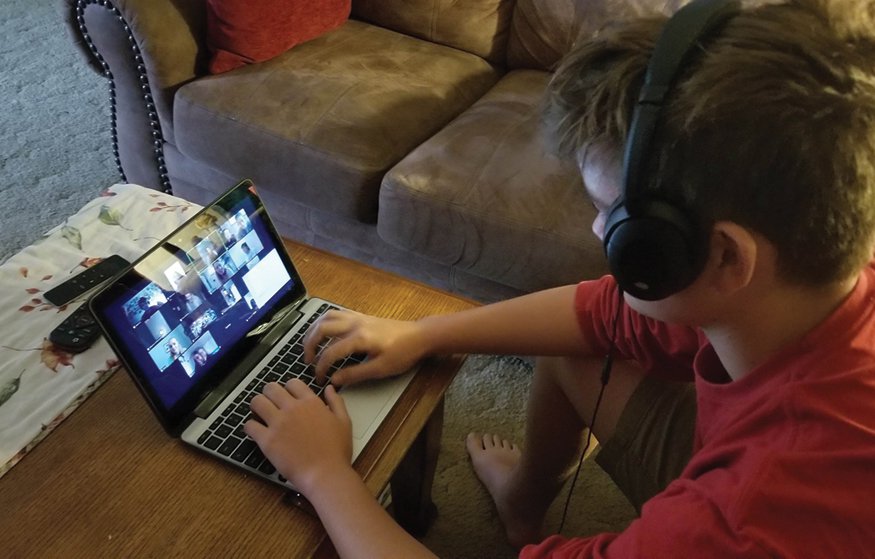What to expect with distance learning
March 30, 2020
Christine Feher is the director of California Pacific Charter Schools, an online-only distance learning school. Following is insight into the opportunities and challenges districts will face with distance learning, including IEP management and working with teachers.
How do we consider supporting our students with disabilities and their needs specific to their IEP?
The California Department of Education has provided us with the following guidance:
- Consider individualized instruction in distance learning settings, and develop plans to provide additional services when onsite instruction and regular school operations resume.
- To the greatest extent possible, Local Education Agencies should continue to provide related services consistent with the student’s IEP. This may involve providing services in accordance to social distancing guidelines.
- LEAs are encouraged to continue payments and take advantage of Non-Public Schools and Agencies because of the critical services they provide to SPED.
- More information available at: https://www.cde.ca.gov/ls/he/hn/specialedcovid19guidance.asp.
- Develop instruction and services for EL that align with the LEA’s language acquisition program while considering their unique learning needs.
- It is important to evaluate students’ progress when regular school session resumes to determine if they need additional support.
It’s a best practice in distance learning to use a combination of synchronous and asynchronous methods. It’s perhaps even more important with our English Learner students.
We recommend that students log into EL specific curriculum as part of their independent study work (we use Middlebury and Brain Pop EL). It’s important to make sure students are still getting time with oral language. In an independent study environment, you have to be really intentional about the time EL students get practicing their listening and speaking skills. This should be done through “live” interaction through your online classroom platform (ie. Zoom or Google Hangouts). You can get these students one-on-one or in small groups and you can also integrate their non-EL peers to mix up the interaction.
Specialty Designed Academic Instruction in English strategies can still be implemented in the curriculum by including graphics and visuals in the independent work. It’s important to check with these students more often to check for understanding or to support their learning. This is a great group to implement a “study hall” environment with. It’s good intervention for various groups. A staff member, usually a teacher, sets up a specific time that he/she will be in an online classroom to support students and answer questions. I find that there’s a small group of students who prefers to do their work during this time. They like the safety of having someone to ask questions in real time.
Guidance on a framework for online learning that meets our state requirements?
CDE Distance Learning Guidance:
https://www.cde.ca.gov/ls/he/hn/distancelearning.asp
Do you know if the minute requirements are different for 1:1 digital learning?
While the governor did not specifically address minute requirements during school closure, there is Ed Code (EC51749.5) governing independent study equivalent daily instructional minutes, which can be used as a guide.
(3) Courses are taught under the general supervision of certificated employees who hold the appropriate subject matter credential pursuant to Section 44300 or 44865, or subdivision (l) of Section 47605 , and are employed by the school district, charter school, or county office of education at which the pupil is enrolled, or by a school district, charter school, or county office of education that has a memorandum of understanding to provide the instruction in coordination with the school district, charter school, or county office of education at which the pupil is enrolled.
(4)(A) Courses are annually certified, by school district, charter school, or county office of education governing board or body resolution, to be of the same rigor and educational quality as equivalent classroom-based courses, and shall be aligned to all relevant local and state content standards.
(B) This certification shall, at a minimum, include the duration, number of equivalent daily instructional minutes for each school day that a pupil is enrolled, number of equivalent total instructional minutes, and number of course credits for each course. his information shall be consistent with that of equivalent classroom-based courses.
In a normal independent study environment, Teachers should assign the amount of work that it takes to meet typical classroom instruction time. Teachers who are already using Google Classroom can easily take the user experience fully online. For those that are new, Google Classroom is fairly easy to navigate, and provides a way for teachers to virtually distribute, collect, and grade the same work you might assign in a traditional classroom.
For example, If in a normal day a math teacher would assign a specific lesson within a unit of a textbook, then the Google classroom assignment would be similar. For some students, this work will take half the time outside of the classroom without the usual instruction. For some, the work will take much longer. Teachers should try to include scaffolded assignments to students who need them (sentence starters, outlines, guided notes, etc.). Additional resources can be added to the assignment as optional supports (such as Khan Academy videos, etc.). Many of the good teaching practices that are common in the classroom can be brought online—you just have to be creative!
School districts statewide have launched distance learning modules for their students. In Tulare,
an eighth-grader in Sundale Unified Elementary School District is meeting with his
teacher and class while sitting in his house.

